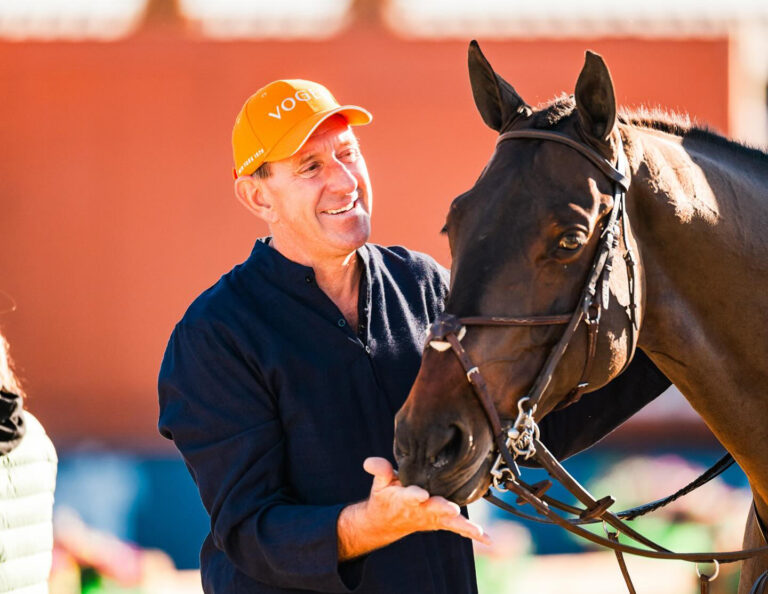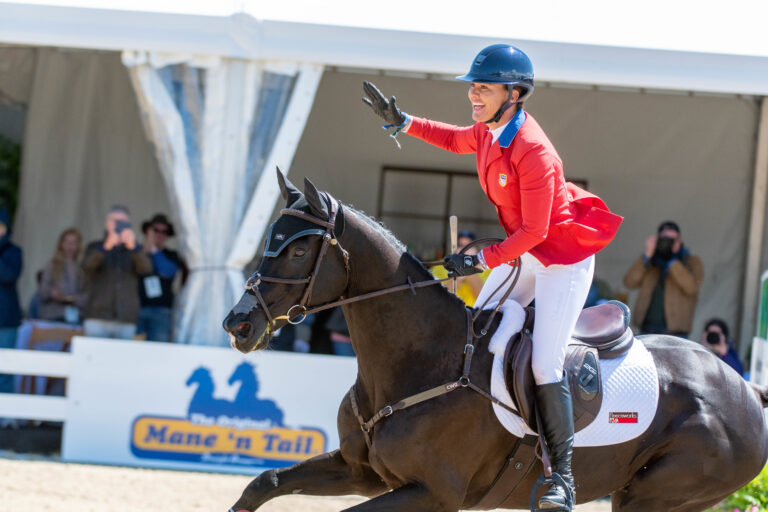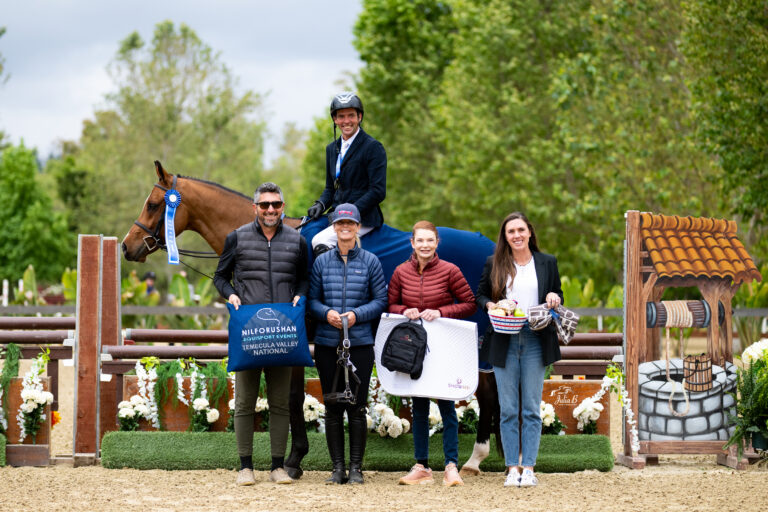When Georgina Bloomberg stepped off the back of her second ride of the day on a summer afternoon, she felt a familiar pain as soon as her feet met the ground. It crept its way through her back and shot down her leg. She wasn’t worried. The pain was recognizable. She felt it every day. Later that evening, she braced herself against the bathroom sink while she brushed her teeth through the piercing pain. The next morning, she couldn’t manage to walk at all.
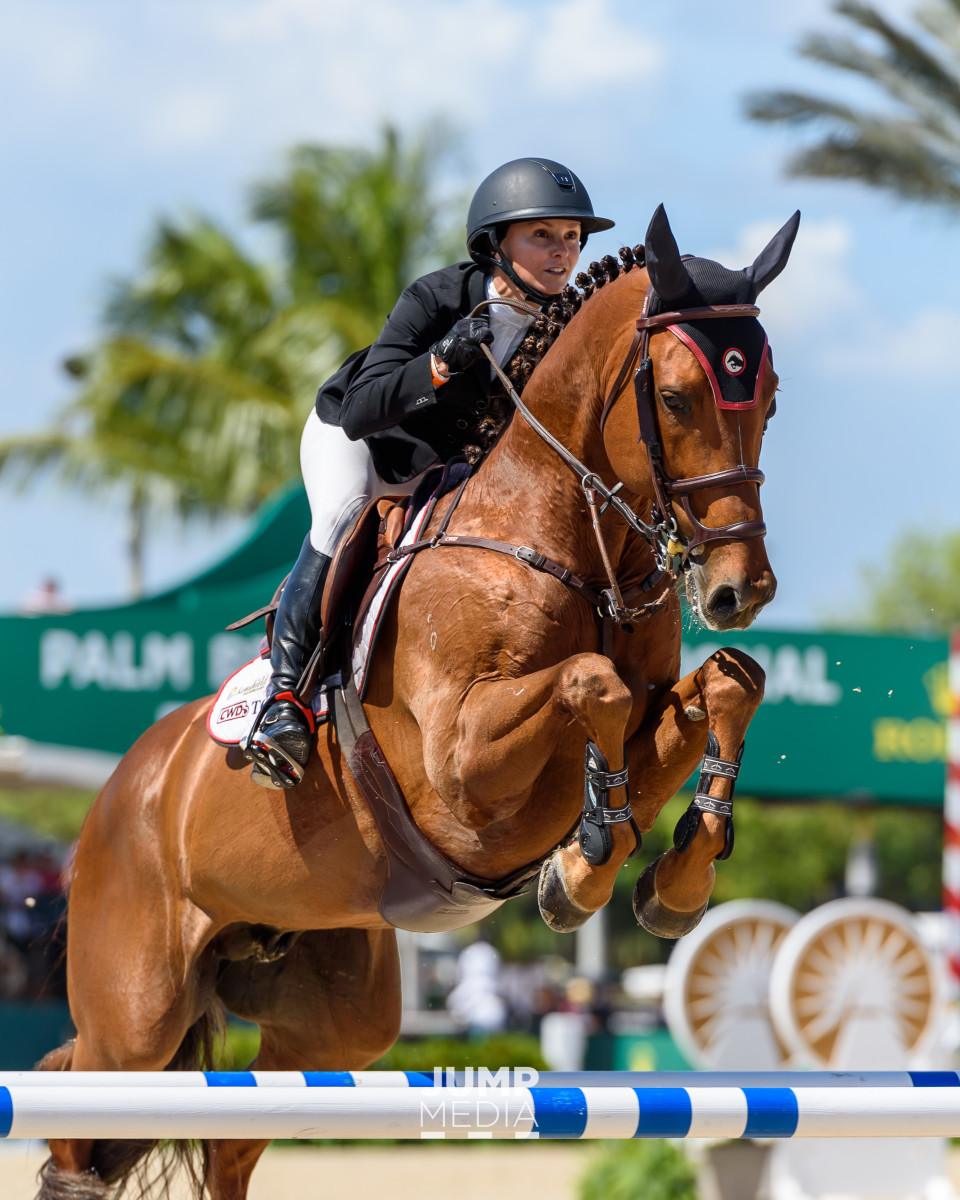
This painful routine was one that U.S. show jumping athlete Georgina Bloomberg had coped with on a daily basis since she was a child. Thousands have watched her compete over the years, but not many know that she was once plagued with a degenerative spinal condition characterized by constant pain. The now 37-year-old was born with Spondylosis, a condition similar to scoliosis that causes severe deterioration of the discs between the vertebral bodies.
Listen to Georgina’s interview on the Practical Horseman podcast
After years of managing the painful condition while continuing to ride and compete, two falls from horses resulted in fractures to Bloomberg’s back due to her weakened spine. The first occurred in 2002 and the second in 2010, leaving her with no option but to face her condition head on.
“I knew that one day I would need surgery to correct the negative effects of the disease but the falls forced me to address it,” said Bloomberg, who underwent surgery to remove the damaged discs and fuse the spine to control movement and limit pain.
“It was never something I considered would stop me from doing what I love, but it held me back a lot,” continued Bloomberg. “I knew I could not train or ride at the same level as someone without it. One of the reasons I decided to go ahead with the surgery was that I knew I couldn’t ride as many horses as everyone else at the top level. I would ride two or three horses and couldn’t walk the next day. At the top level, that doesn’t work.”
The Surgery
After the second fracture was completely healed, Bloomberg went ahead with surgery during the summer of 2011. The surgery took place at New York City’s Hospital for Special Surgery (HSS), and was performed by Dr. Oheneba Boachie. For Bloomberg, Dr. Boachie wasn’t just any surgeon; he also appealed to her sensibilities as a philanthropist and as a person dedicated to giving back to a world in need.
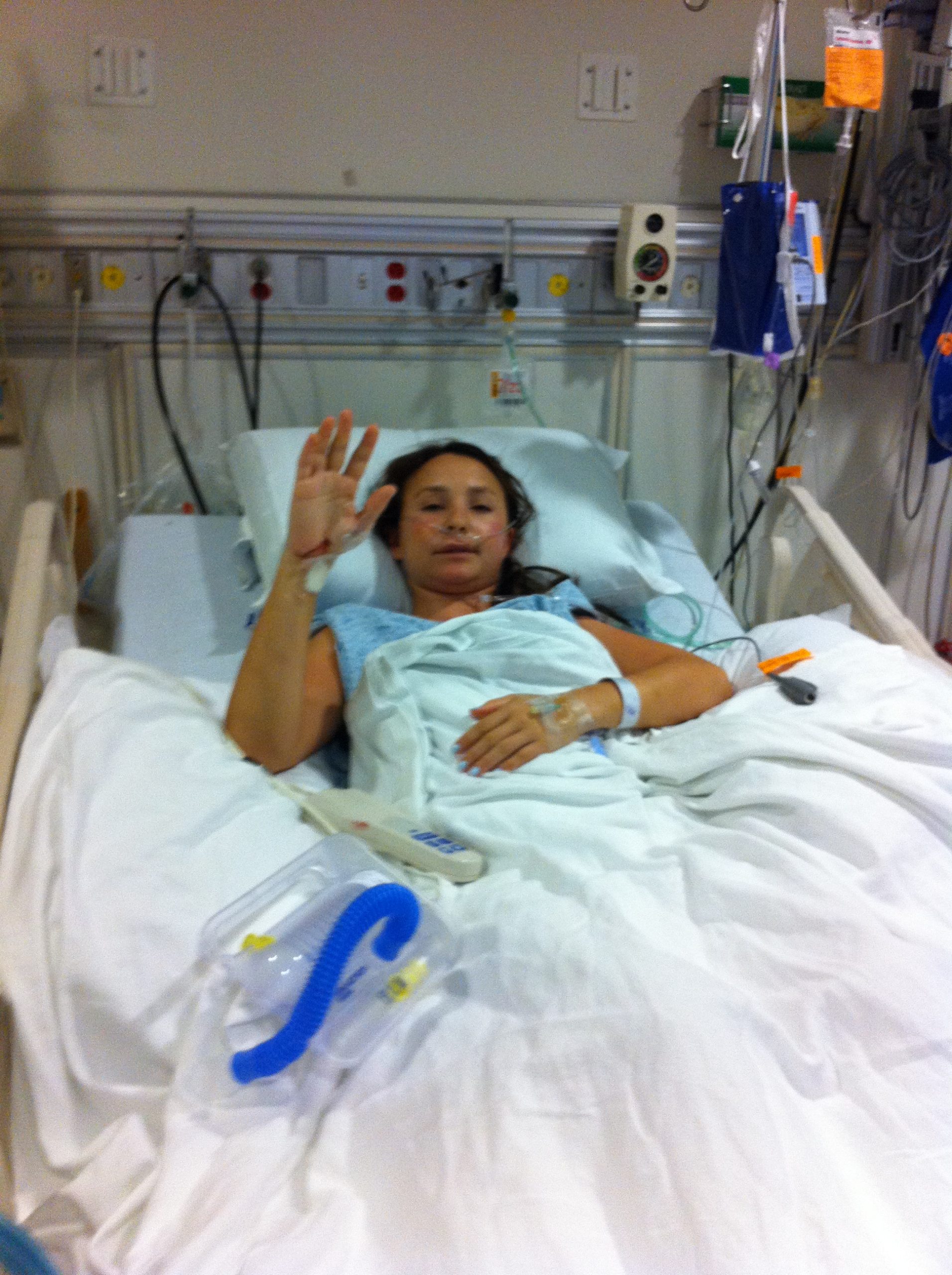
Dr. Boachie, a Ghanaian orthopedic surgeon specializing in spinal reconstruction, emigrated to the U.S. in 1972, studied at Brooklyn College, and received his Doctor of Medicine from Columbia University’s College of Physicians and Surgeons.
“The reason I chose him was because I liked him as a person,” said Bloomberg. “He worked at a hospital as a janitor to earn enough money to go to medical school. It was his dream to return to Ghana one day and provide free surgeries to children suffering from the same condition that I had.
“I was about to go through something that was going to change my life, and I needed to trust – and like – the person who would perform the procedure,” continued Bloomberg. “I wanted to develop a relationship with the doctor who was going to go into my body and move my spine around.”
After her surgery was complete, Bloomberg was still drawn to Dr. Boachie’s vision for global healthcare as it pertained to her particular condition. She helped him create the Foundation of Orthopedics and Complex Spine (FOCOS), a state-of-the-art orthopedic hospital in Ghana that opened its doors in 2012. To date, FOCOS has provided thousands of surgeries and treated more than 50,000 patients from African countries. Bloomberg stays in close touch with Dr. Boachie, donates to his foundation, and is hopeful that his work makes the same huge difference in the lives of many others just as it did for her.
Overcoming Fear
“The surgery was scary,” said Bloomberg. “It wasn’t just because it was a major procedure, but for me as a rider, I knew something could go wrong and I would never ride [again]. Even more than that, I might never walk again. It was also scary for me to look at the bigger picture and consider taking a year off to recover. It was something that could sideline me for the rest of my life and drastically change my career, no matter what.”
Ultimately, the surgery was successful at correcting Bloomberg’s spine by fusion with metal plates and screws. As a dedicated athlete, her typical reaction to previous injuries had been to push through and get back in the tack as soon as she could, no matter the odds or the doctor’s orders. This time was different. She spent her first few months in bed with an outlook on recovery that she had never allowed herself to recognize.
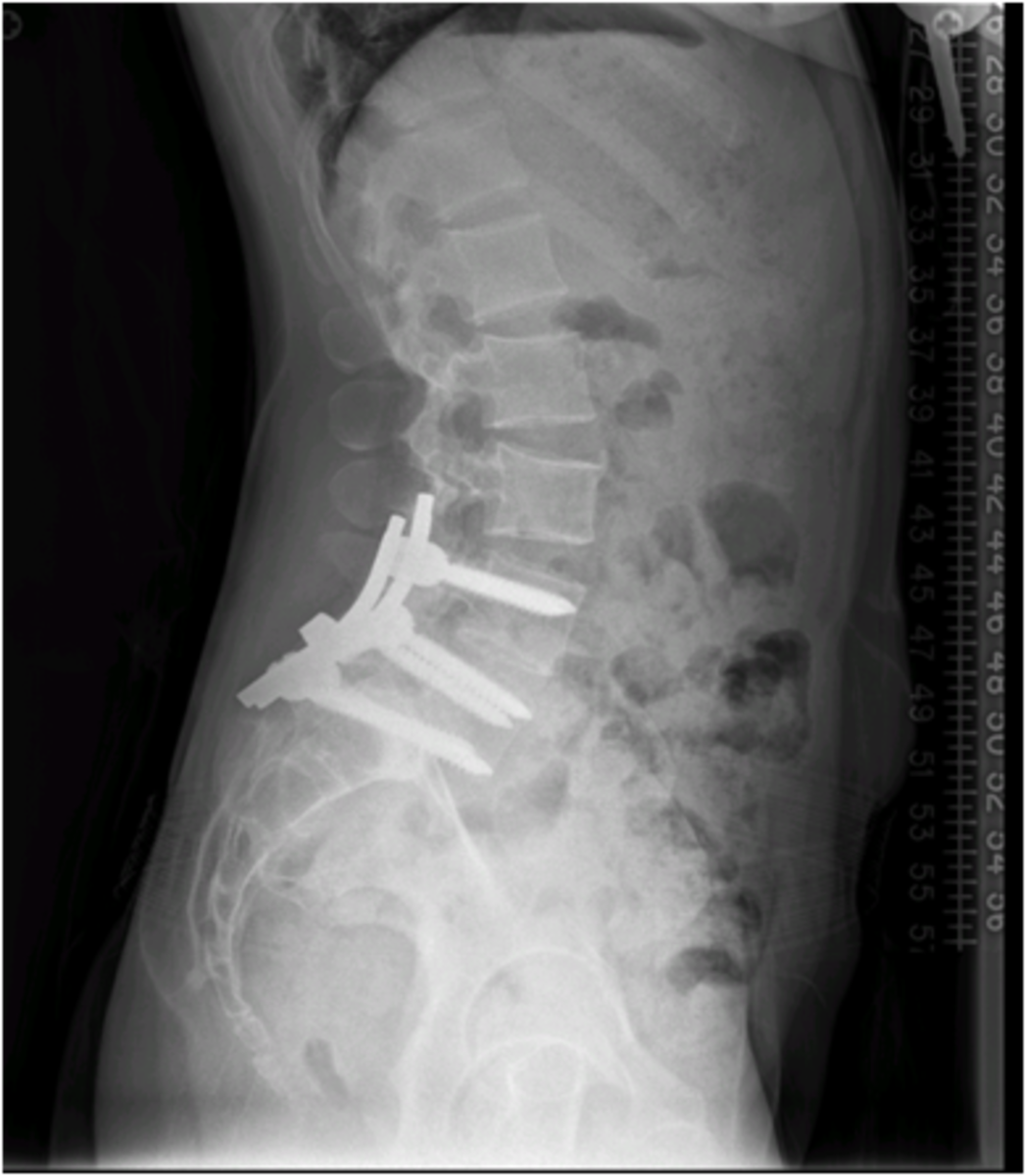
“It was the first time I did what the doctors said, took my time, and made sure I was as strong as possible before I went near a horse,” she said, crediting her team at Gotham North for keeping her string of horses healthy and fit during her recovery. “I knew it was my one chance to fix my spine and change my life in so many ways. I didn’t take that for granted. I did everything by the book and it worked.”
While a few Bravo television marathons took place during her time in bed, she lived her life from one training and physical therapy session to the next. During her rest and recovery time, Bloomberg stayed laser focused on doing exactly what her doctors said was required for a full comeback.
Once she was back on her feet, Bloomberg embarked on a long journey of more intense physical therapy, first at HSS and then at Athletes Advantage based in Wellington, Florida. She learned about Athletes Advantage from fellow show jumping athlete Candice King, who had used its services to recover from an injury of her own. The facility specializes in returning top-tier athletes to peak performance after injury or surgery.
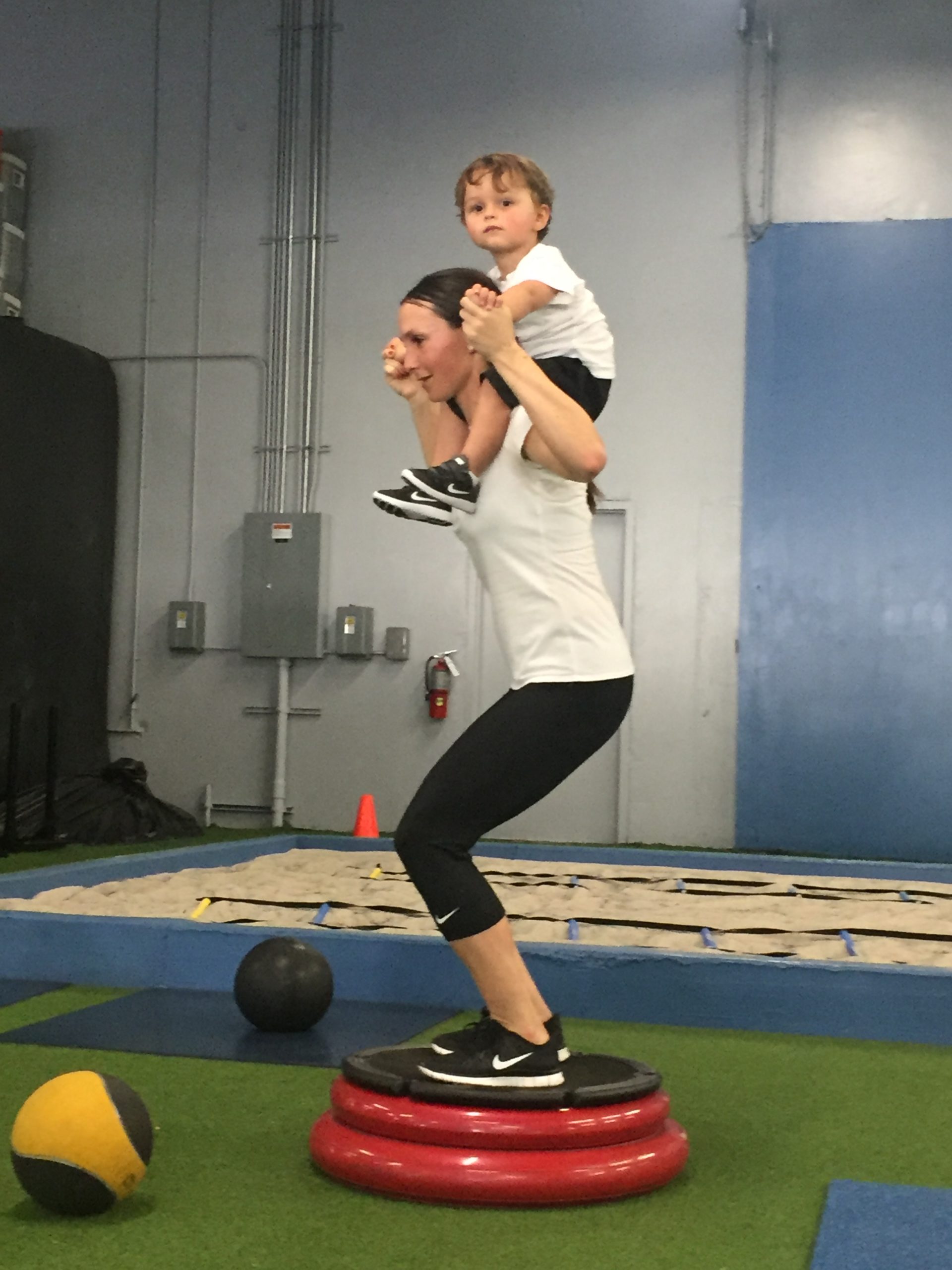
“My body was starting from scratch,” said Bloomberg. “Every single one of my muscles needed to build back up, not just my back.”
Bloomberg says that her Athletes Advantage physical therapist and coach, Ed Smith, has become like a father figure to her since her intense recovery period. She still works out with Smith at Athletes Advantage every day when she is in Florida for the winter show jumping season.
“From core exercise to building my strength back and learning to trust my body again, my recovery time taught me to intimately understand the importance of maintaining my body and I learned that this important work is never done,” said Bloomberg.
Getting Back in the Saddle
While Bloomberg was getting strong in the gym, she knew that the real test would come when she got back on a horse for the first time. That day came in February of 2012. The horse was Metropolitan, a mount that had carried her in Nations’ Cup competition representing the U.S. before her surgery, and later entered her breeding program to sire her homebred, Manhattan.
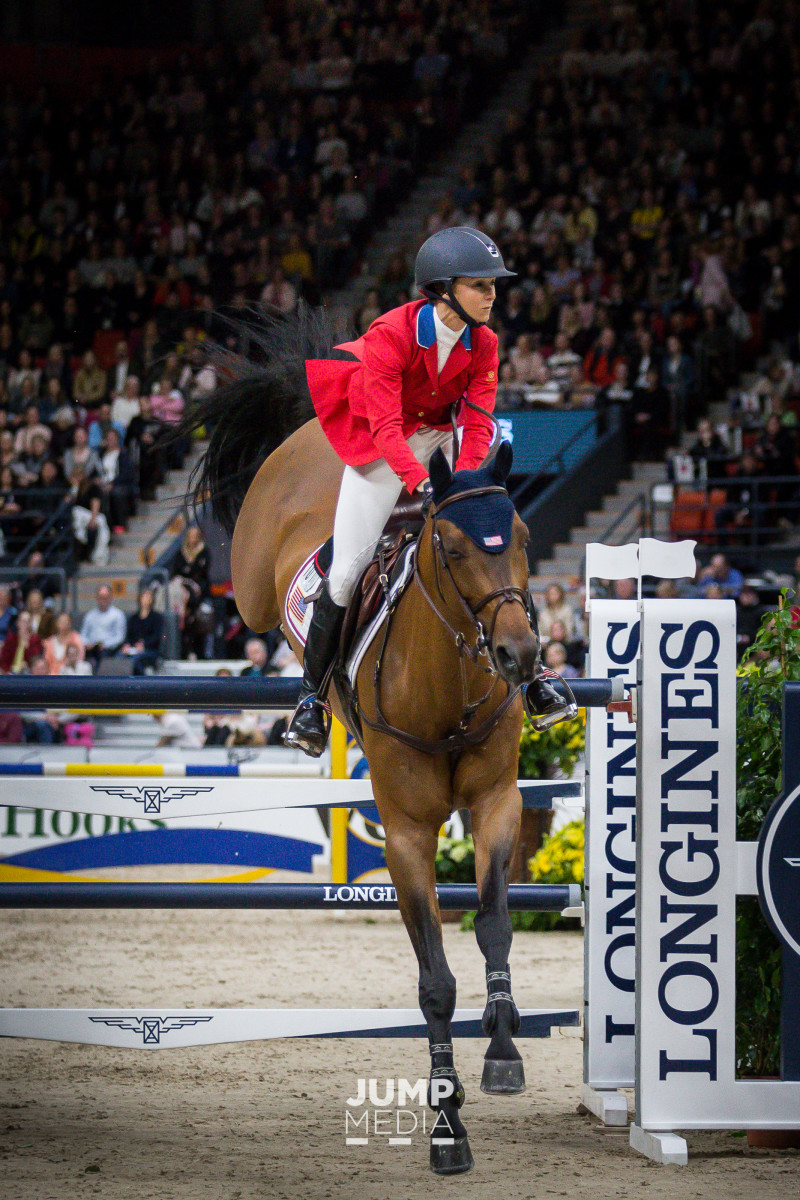
“I’ve never really been fearful of injury, but during that first ride I was scared,” admitted Bloomberg. “I understood the depths of what went on in my body. I had all this metal in my back and was not as strong as I would like. It was different in that there was no accident that I was coming back from, so I didn’t have that kind of fear, but it was still scary because I didn’t know my body.”
Bloomberg, again on the advice of her doctor, took her time. She started back jumping 1.20m and worked her way back up, all while learning what her new and seemingly more fragile body was capable of handling.
While a fall is never the goal for any rider, for Bloomberg her first serious fall from a horse post-surgery was a breakthrough moment.
“That fall was something that actually helped me,” she said. “For a long time, after every fall – even if I had landed on my feet – I called my doctors and would go in for an X-ray convinced something had moved in my back. After that first serious fall, I finally knew I was okay.”
Today, Bloomberg says the most valuable lesson she learned from her experience with Spondylosis is that sometimes pushing through pain is not the most productive for a full recovery. In her case, surgery—along with the subsequent recovery period—was a necessary action to keep her at the top of her sport. Bloomberg now realizes that she, like many other athletes, had been treating injury and the pain that came with it as a test she needed to pass in order to prove she was strong enough to succeed in her sport. In the end, however, she is grateful to have learned the importance of following doctor’s orders, even when they sideline you from the thing you are most passionate about in life.
“My doctors knew exactly what it was going to take to get me back on my feet and eventually back on a horse, and I listened,” said Bloomberg.
She has rallied to find success in the competition ring and to continue representing her country on the global stage. But, that’s not the best outcome for her. What she’s most thankful for is a life without pain.
“Today, I am completely pain free,” said Bloomberg. “Pushing past fear, working hard, saying “yes” to surgery, and listening to every single recommendation from my doctors was the best thing I ever did.”





